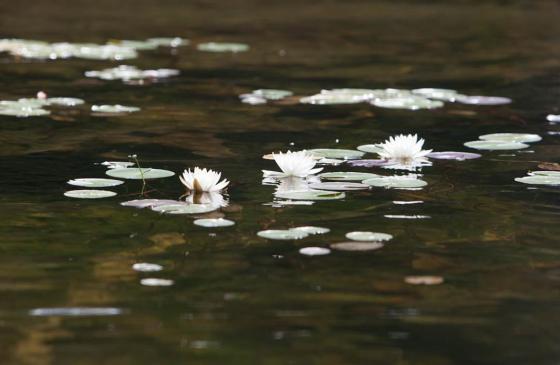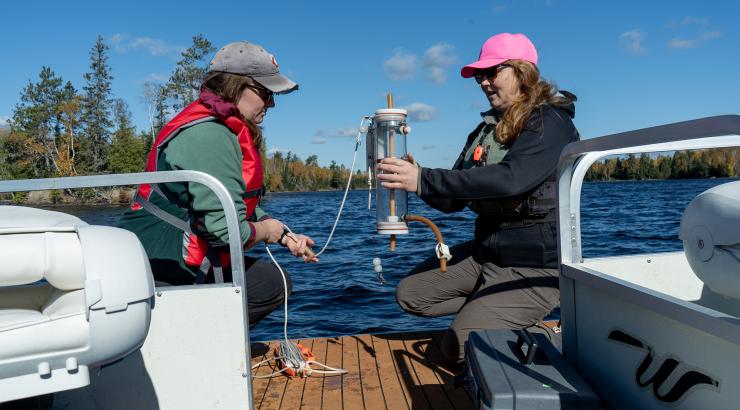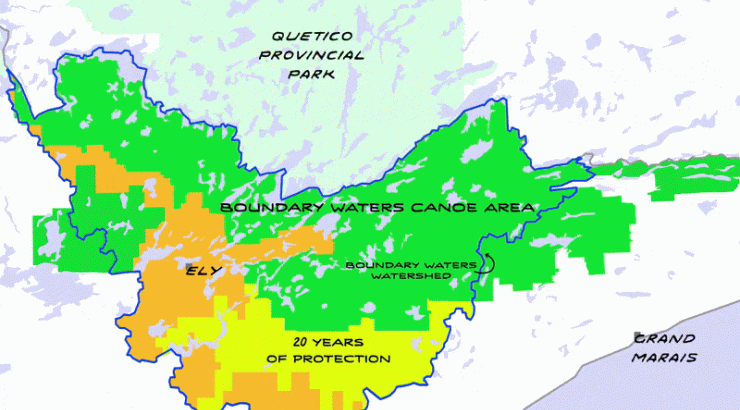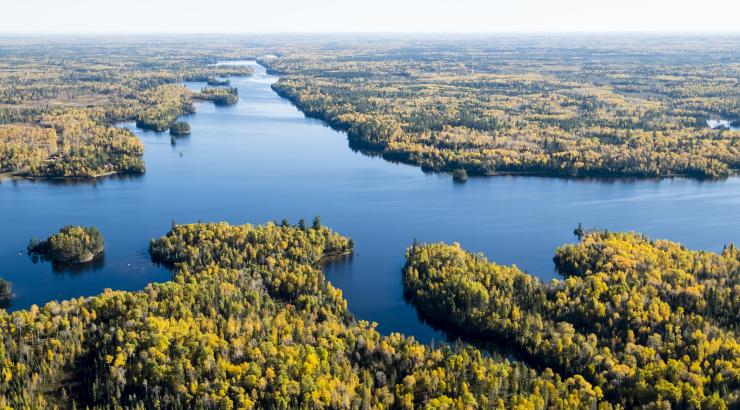The Boundary Waters has never needed us more than it needs us now. The wild, natural heart and soul of Minnesota are at stake. Do we want the Boundary Waters and the rest of our beautiful, healthy Arrowhead forests, lakes, and rivers to continue to be the magnet that draws scores of thousands of visitors from around the country and the world every year, with the resulting enrichment of lives and of the economies of Ely, Grand Marais, Tofte, and other Wilderness-edge communities - indeed, of the economy of Minnesota as a whole? Or would we rather have a Chilean mining company, Antofagasta/Twin Metals, begin the development of a vast industrial sulfide-ore mining district in the heart of the Superior National Forest on the doorstep of our priceless Wilderness?
The Trump Administration has taken two actions recently that make the job of the Campaign to Save the Boundary Waters harder. The Administration decided (i) to create justification for the reissuance of mining leases that were denied by the Obama Administration and (ii) to downgrade the U.S. Forest Service environmental review for the proposed twenty-year withdrawal of 234,328 acres of the public’s land in the Superior National Forest from the federal mineral leasing program. The Campaign intends to prevail over these setbacks with the help of Campaign partners and their millions of supporters.
First, the Trump Administration Department of the Interior, under Secretary Ryan Zinke, issued a legal opinion on December 22, 2017 that reverses earlier opinions that held that Twin Metals had no right to have old mining leases automatically renewed. If the mining leases were automatically renewable, Twin Metals would be able to avoid legally-required scientific study of the environmental effect of issuing leases for mining in the areas covered by the leases on the South Kawishiwi River and Birch Lake in the Boundary Waters watershed. The Campaign and its pro bono legal counsel believe that the Trump decision is clearly wrong, and we will file a lawsuit in federal court seeking to have the decision overturned. The language of the leases themselves, the federal laws that govern mineral leasing, and statements in the mining company’s own documents prove that Twin Metals has no automatic right of renewal.
Second, the U.S. Forest Service’s request in January 2017 that the Secretary of the Interior withdraw from the federal leasing program all federally-owned minerals in the Rainy River Drainage Basin, which includes the watershed of the Boundary Waters, triggered a legal requirement for environmental review of the environmental, social, and economic effects if sulfide-ore mining were permitted on federally-owned minerals in the Basin. Recognizing that the Boundary Waters is priceless and vulnerable, and fully cognizant of the poisonous water pollution and landscape destruction that always accompany sulfide-ore copper mining, the Forest Service began the process of developing a full environmental impact statement. An EIS provides for a thorough analysis (i) of relevant scientific studies of the impact that sulfide-ore mining would have on the ecology of the Boundary Waters and (ii) of the economic and social impacts of the destruction of a large part of the Superior National Forest and the pollution of Boundary Waters lakes and rivers. An EIS also provides for multiple opportunities for the public to comment during the process.
In another misguided decision, on January 26, 2018 the Trump Administration downgraded the legally-mandated environmental review of the proposed minerals withdrawal from a full EIS to a less-rigorous “environmental assessment.” One of the many negative results of the downgrade is a reduced opportunity for public comment. The Superior National Forest lands at issue belong to all the people of the United States, not to a Chilean mining company with a history of environmental violations and multiple alleged instances of corruption, its allied politicians, and the tiny handful of people who would benefit economically from a Boundary Waters mine.
A second negative result is that an EA may be a less rigorous and comprehensive analysis of the unique ecology of the Boundary Waters region – those very qualities that make the watershed both valuable as the world’s greatest canoe country wilderness and vulnerable to the inevitable and irreparable damage of sulfide-ore copper mining. An EA may not fully document the harm to Wilderness-edge communities, the State of Minnesota, and all people that would result if a large swath of Superior National Forest lands, now ecologically healthy and available for a variety of uses, were converted to a massive industrial mining district. An EA may not fully document the failure of project-specific environmental reviews to accurately predict water pollution generated by hardrock mines near surface and ground waters; those studies are wrong 90% of the time. And an EA may not fully document that all copper mines, including modern copper mines in the United States, pollute water. A full EIS, on the other hand, would document that the only way to protect the Boundary Waters from the ravages of sulfide-ore copper mining is to ban mining on public lands in the watershed of the Boundary Waters.
The Campaign is determined to prevent sulfide-ore copper mining on federal lands in the Boundary Waters watershed. With your help, the Campaign will succeed. Together, this is what we must do:
- Urge the Forest Service to prepare a rigorous and comprehensive environmental study that thoroughly analyzes the devastating impacts of sulfide-ore copper mining on Superior National Forest lands in the Rainy River Drainage Basin; that provides the scientific, economic, and social basis for the protection of 234,328 acres of Superior National Forest lands; that documents why only a ban on mining can protect the Boundary Waters.
- Urge the Forest Service to submit a strong recommendation to Interior Secretary Zinke asking that he order a 20-year ban on mining on 234,328 acres of Superior National Forest lands.
- Urge Secretary Zinke to ban mining on 234,328 acres of Superior National Forest lands for twenty years, the maximum allowed by law.
- Urge every elected official and candidate for office to support the protection of the Boundary Waters from sulfide-ore copper mining by banning mining in the watershed. Tell them your support of them depends on their commitment to take all actions necessary to achieve this goal.
- Celebrate the Boundary Waters in 2018, the 40th anniversary of the 1978 Boundary Waters Wilderness Act. Established as a national Wilderness Area in 1964, the Boundary Waters received stronger Wilderness protection by virtue of the 1978 Act, including a ban on mining in the Wilderness and along 234,328 acres of Superior National Forest lands in entry corridors.
Together we must fight every effort to damage the Boundary Waters. And together we will prevail.



